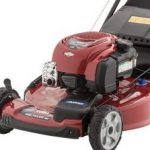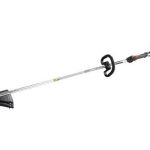If you’re going to garden, then you are going to do a lot of cutting and digging. Both activities require sharp tools.
The tools commonly in the toolbox or tool shed of gardeners include hedge shears and grass clippers. Here are suggestions on how to keep them sharp so they perform a precise cut.
These tools have something in common. The two sharp surfaces of the blades come in contact at the base and cut through the tips. They cut grass and twigs in the same manner scissors cut.
The cutting surfaces of these tools are prepared at the factory to the precise angle that makes them most efficient. Sharpen them right, and they will easily cut tissue paper. The key is to sharpen along the factory cut bevel. Some mistakes in sharpening include attempting to create a better cutting edge than what already exists or the wrong tool is used to sharpen them.
It is suggested that non-professionals should not use a power grinder to sharpen. Instead, it is recommended that you purchase a 10-inch long mill file for best control when sharpening.
Before purchasing, check the package. It will tell you whether it is okay to use on garden tools. If you don’t want to use the same file on grass clippers, then you can sharpen them using an ordinary scissors sharpener.
Tools you will need to sharpen shears and grass clippers include:
· 10-inch half round File
· 10-inch “mill bastard” file
· Safety glasses
· Leather gloves
· Vise
· 300-grit wet/dry Sandpaper
· Scissor sharpener
Sharpening Shears With a File
First, find out if the shears actually need sharpening. To do this, loosen the pivot nut so the blades drift apart and cut and tear a twig instead of cutting it cleanly. Tighten the nut and perform a test cut. If the cut is clean, there is no need to sharpen the tool. If it cuts poorly, inspect each blade to ascertain if they are bent. If the blade is slightly bent, then loosen the pivot nut and separate the blades. To straighten the blades, put the tool into a vise, put on leather gloves to protect your hands, and flex it until it’s straight.
Be aware that hedge shears are not meant to be pruning shears. Instead, the tool is designed to cut green wood that is no thicker than 3/8-inch. Cutting thicker branches or dried wood can put stress on the pivot nut and cause the blades to bend slightly.
If you discover that the blades need to be sharpened, then file the edge of the blade with two hands. Start at the point and follow the curve of the factory bevel. Make one complete stroke from the point to the base of the blade. Do the filing away from you and apply light pressure. Check the edge after each stroke to be certain you are following the true path of the factory bevel. Once fresh steel has been exposed along a consistent curve, feel the backside of the blade to check for burrs. Sand the burrs away.
Sharpening Grass Clippers With A Scissors Sharpener
Before sharpening the clippers, try tightening the pivot nut and oiling the clippers. If this does not improve the cut, remove the pivot nut. Separate the blades. Hold one of the blades on a wood block with the cutting edge up. Pull the scissors sharpener firmly from the base of the blade to the point. Be certain that the carbide sharpening edge is making full contact with the factory bevel of the blade. Pull the scissors sharpener across the blade until it is sharp. It commonly takes about 10 passes. Once you have finished with one blade, do the same on the other blade.







